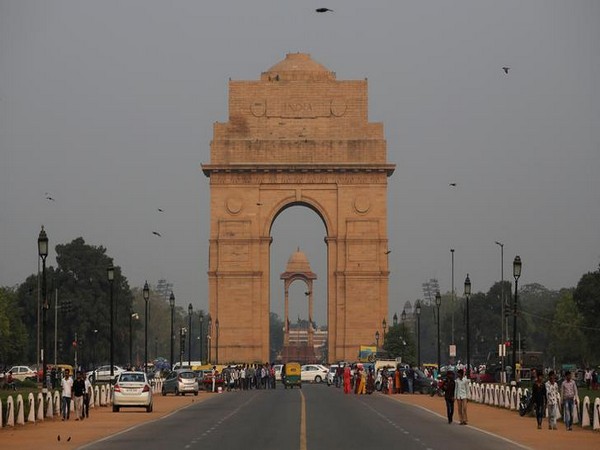Patna: The government released the ‘Swachhta’ (cleanliness) ranking for the year 2018. This year also, Indore was the number one ‘Swachh’ city ahead of 4202 cities in the country.
The special thing is that in this ranking, many small towns in the country have performed far better than the big metros like Delhi and Mumbai. Ghaziabad has achieved the 36th rank in this year’s rankings, compared to a lowly 359th last year.
The six parameters on which the rankings were based included the process followed for segregation of dry and wet waste, processing, disposing, transportation, sanitation and innovation. Behind the introduction of the hygiene ranking, the main objective was to create a healthy environment through cleanliness from city to village. Under this, it is important to promote proper disposal of garbage and to liberate the country from open defecation.
Experts believe that despite all the facilities, the big metros like Delhi and Mumbai are not achieving the desired rankings because of the population in these cities being largely migratory in nature. In the search of employment, a large population of the country moves to developed cities. As a result, slums are being constructed illegally in these cities where even the clean drinking water is not easily available. Providing a clean environment to the population of these cities is becoming a daunting challenge.
Development in big cities has also brought to the fore big changes and finding solutions to these issues is complicated. One of these problems is the rapid urbanisation and unexpected increase in the density of urban population. Due to the increase in urban population, slums have started cropping up.
Slums can be found in the heart of the cities or on the outskirts, people residing here are deprived of many basic amenities. To provide the benefits of development, the Central Government adopted the Sustainable Development Goals (SDGs) of the United Nations and created an ambitious plan to bring about complete development by the targeted year of 2030 for achieving all the 17 goals set by the United Nations.
SDG 11 states that we should aim to make cities and human settlements inclusive, safe, resilient and sustainable; SDG 11.1 states that by 2030, ensure access for all to adequate, safe and affordable housing and basic services and upgrade slums and SDG 11.5 states that by 2030, significantly reduce the number of deaths and the number of people affected and substantially decrease the direct economic losses relative to global gross domestic product caused by disasters, including water-related disasters, with a focus on protecting the poor and people in vulnerable situations.
According to one figure, approximately 31 percent of India’s current population lives in cities and their contribution is 63 percent (census 2011) in the gross domestic product (GDP). It is expected that by the year 2030, about 40 percent of the country’s population will live in urban areas and contribute 75 percent to India’s GDP. For this, the widespread development of physical, institutional, social and economic infrastructure will be needed. All of these are important in improving the quality of life and attracting people and investment. The development of smart cities is a big step in this direction.
The three basic pillars that have been set up for a Smart City include major physical infrastructure, social services and administration. Along with this, it has been considered necessary to have the characteristics of minimum waste production, including energy efficiency, effective mechanism of exchange of information in smart cities.
Undoubtedly, this effort of the government is commendable, but in this sequence we also have to see that the pace of growing population and urbanisation has given rise to large settlements and slums which are still deprived of many basic amenities, mostly clean water for drinking and bathing. Due to this, it is common for every big city of India to see a large crowd standing in long queues for water every morning.
In this regard, a woman living in the slums near Patna’s Gandhi Maidan for the last five years said, “There has not been a single day in these past five years when there hasn’t been a quarrel between the people queued up for water in the morning. Yes, while the lack of water in the summer is a concern, there is plenty of water in the monsoon, but it is so dirty and smelly that one cannot drink it. In such a situation, we have to make arrangements for water from another sources.” In the clean cities of 2018, Patna was ranked 262.
Farhana, who lives in the country’s capital Delhi, said, “Even after being a green city full of trees, the World Health Organisation has declared Delhi as the most polluted city in the country because of the kind of lifestyle that is being adopted in the name of urbanisation, the problem of pollution is increasing day by day. It is thus necessary that the Center and the state government should understand the seriousness of the problem and try to resolve it. ”
According to Rupesh Dubey, a Mumbai resident, “The problem of water is common here but most of the trouble is that at the time of a natural calamity like earthquakes and floods, skyscrapers have the risk of collapsing like a deck of cards. However, after the government’s efforts in the last few years, earthquake resistant buildings are being constructed at many places. In many places the water situation and water quality have also improved, but still a great effort is needed.”
It is clear that both state to the central governments are continuously striving to improve the condition of cities and slum areas. The Smart City Project is a good example of these efforts. It can be expected that gradually development will move towards right direction in the country to benefit all sections while maintaing balance when it comes to availability of facilities.
The views expressed in the above article are that of Nikhat Perween of Charkha Development Communication Network. (ANI)

